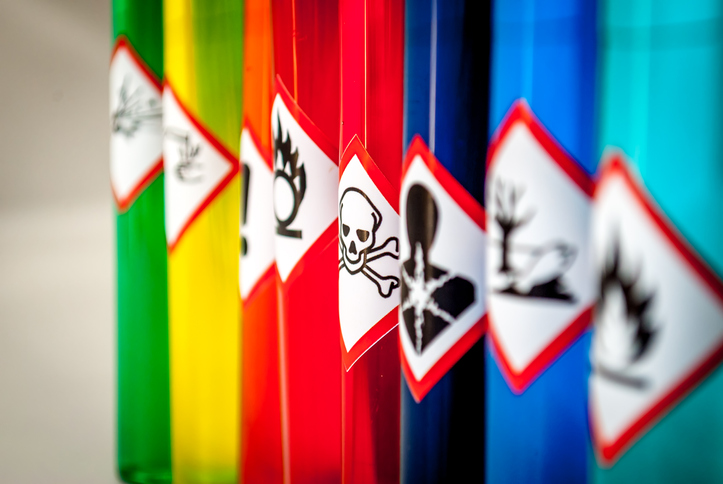
Toxic chemicals have long been vilified and associated with harm and danger. However, this one-sided perspective fails to acknowledge these substances’ complex role in our lives. When used judiciously and with proper hazardous materials assessment and management, toxic chemicals can offer significant advantages across various industries. Get a new understanding of the often-overlooked benefits of toxic chemicals by challenging misconceptions emphasizing the importance of responsible handling and regulation.
Benefit #1: Medical Advancements
Toxic chemicals have been instrumental in medicine, leading to groundbreaking discoveries and life-saving treatments. Chemotherapeutic agents, for instance, are intentionally toxic to cancer cells, targeting and destroying them. Additionally, toxic chemicals are used to sterilize medical equipment and ensure the safety of surgical procedures.
Benefit #2: Agriculture & Food Production
Pesticides and herbicides, often considered toxic, play a crucial role in agriculture. They protect crops from pests and weeds, ensuring higher yields and more efficient food production. It is particularly important in combating world hunger and sustaining the growing global population.
Benefit #3: Water Purification
Chlorine, a toxic chemical, is widely used for water purification. It effectively kills harmful microorganisms, making drinking water safe and preventing the spread of waterborne diseases. The controlled use of chlorine has significantly improved public health worldwide.
Benefit #4: Energy Generation
The energy sector relies on toxic chemicals for various purposes. In nuclear power plants, radioactive materials are used to generate electricity. While these materials are highly toxic and hazardous, they provide a significant source of clean energy, reducing greenhouse gas emissions.
Benefit #5: Manufacturing & Industry
Toxic chemicals are integral to manufacturing processes. They are used to produce numerous everyday products, from plastics and electronics to pharmaceuticals and textiles. Without these chemicals, many industries would grind to a halt.
Benefit #6: Waste Disposal
Toxic chemicals are used to treat and dispose of hazardous waste. These substances are rendered less harmful and can be safely stored or disposed of through chemical processes like incineration and stabilization, preventing environmental contamination.
The Role of Hazardous Materials Assessment & Toxic Chemicals
It’s important to emphasize that the benefits of toxic chemicals are contingent upon rigorous hazardous materials assessment and management. These processes ensure that the risks associated with toxic substances are minimized and their advantages are harnessed responsibly.
Key elements of effective hazardous materials assessment include:
Risk Evaluation
Before using any toxic chemical, it’s essential to evaluate the associated risks comprehensively, which includes assessing the toxicity levels, potential exposure routes, and the likelihood of adverse effects. Understanding the risks allows for informed decision-making and risk mitigation.
Safety Protocols
Proper safety protocols must be in place when working with toxic chemicals. These include using personal protective equipment (PPE), implementing engineering controls, and adhering to established procedures. Safety training and education are also vital components of hazard management.
Regulatory Compliance
Strict adherence to local, state, and federal regulations is non-negotiable. These regulations govern the handling, transportation, storage, and disposal of toxic chemicals. Compliance ensures that toxic substances are managed in a manner that safeguards human health and the environment.
Emergency Response Planning
Preparedness is key in accidental spills, leaks, or exposures to toxic chemicals. Hazardous materials assessment includes developing comprehensive emergency response plans to minimize the impact of accidents and protect responders and the public.
The Misconceptions About Toxic Chemicals
Thanks to hazardous materials assessment, you know how some toxic chemicals are applied for various benefits. Now, let’s debunk a few common misconceptions about toxic chemicals here:
Misconception #1: All Toxic Chemicals Are Inherently Harmful
Contrary to popular belief, not all toxic chemicals are equally harmful or pose an immediate threat. Toxicity levels vary significantly, and many substances are safe when handled responsibly. Hazardous materials assessment helps distinguish between harmful and relatively safe chemicals.
Misconception #2: Avoidance Is Always the Best Approach
While minimizing exposure to toxic chemicals is important, avoidance isn’t always feasible or practical. In many industries, toxic chemicals are essential for specific processes or applications. Instead of avoidance, effective hazardous materials assessment focuses on risk reduction and safety measures.
Misconception #3: All Chemicals Are Created Equal
Chemicals vary widely in their properties and effects. Assuming that all chemicals, toxic or not, are equally hazardous oversimplifies the complexities of chemical substances. Hazardous materials assessment takes into account the unique characteristics of each chemical.
In conclusion, it’s imperative to recognize that toxic chemicals aren’t solely agents of harm; they are also agents of progress and innovation. When managed responsibly through hazardous materials assessment, they contribute to advancements in medicine, agriculture, water treatment, energy generation, manufacturing, and waste disposal. It’s our collective responsibility to strike a balance between harnessing the benefits of toxic chemicals and mitigating their risks. Through stringent safety protocols, regulatory compliance, and informed decision-making, we can leverage the advantages of toxic chemicals while safeguarding human health and the environment.



